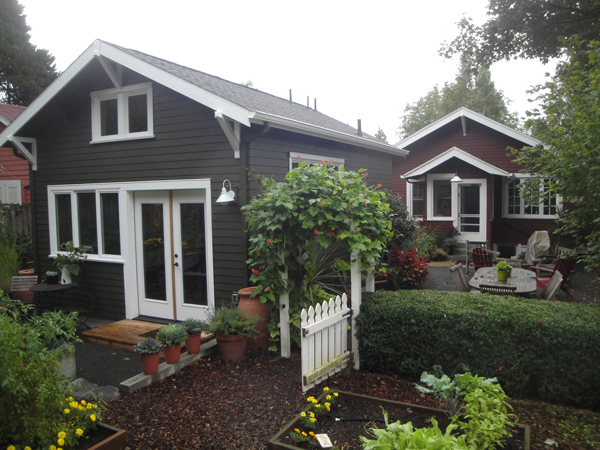The California legislature passed a series of new laws that went into effect January 2018 that help promote the creation of accessory dwelling units (ADUs) by clarifying policies and making it easier to move forward with such projects. ADUs come in a variety of forms such as micro-homes, granny flats, backyard cottages and in-law units, and are being promoted as one tool to combat the Bay Area’s gripping housing crisis. Historically ADUs were used as multi-generational housing in which members of extended family would live closely.
The new state legislation empowers cities to make it easier for homeowners to build ADUs on their properties.
“We’ve gone through a series of regulation updates for ADUs. Last year there was an effort to update our ordinance to align with state law,” said Andrew Crabtree, Director of Community Development for the City of Santa Clara. “In September 2017, we amended our codes to align with the state and held a number of outreach meetings.”
Crabtree commented that one of the biggest changes caused by the legislation is the removal of parking requirements for ADUs, so that when a new unit is constructed, the creation of a new vehicle parking space is not mandated by the state and there’s a limit to requirements imposed locally. One of the pieces of legislation, Senate Bill 1069 states:
“Parking requirements for accessory dwelling units shall not exceed one parking space per unit or per bedroom. These spaces may be provided as tandem parking on an existing driveway. Off-street parking shall be permitted in setback areas in locations determined by the local agency or through tandem parking, unless specific findings are made that parking in setback areas or tandem parking is not feasible based upon fire and life safety conditions.”
Crabtree also revealed that there’s been in an uptick in interest for ADUs following the passage of the laws saying, “There’s been a 50 percent increase in ADU applications for this year so far.” He went on to say that since last September there have been 45 applications found to be consistent with planning code, 14 of which have translated into building permitted, approved projects.
The City of Santa Clara has been conducting local outreach to get residents up to speed on the new policies, which granted greater latitude around ADUs, and the positive response from community members has been considerable. Crabtree explained that there are many factors that will play into how much ADU construction Santa Clara will experience in coming years such as the cost of construction. Other factors include housing demand and availability of street parking. Personal preferences of homeowners also play a role as some residents want to retain their backyard areas for purposes other than additional housing.
“They’re [ADUs] a helpful part of the overall puzzle of the housing situation,” Crabtree said.
Despite parking availability being a top concern for residents in Santa Clara and other cities, people so far haven’t expressed significant concerns to City officials specifically around the lack of parking requirements for ADUs. Crabtree commented that the perception of adequate parking varies from neighborhood to neighborhood and is also somewhat subjective; some residents are accustomed and expect to be able to park right in front of their homes, while others don’t mind parking around the block.
The increase in ADU applications seems to be happening in many municipalities across the state. According to University of California Berkeley researcher, David Garcia, the rise in ADU construction had already been underway resulting from regulatory changes that took place between 2015 and 2017.
“In two of California’s major metropolitan areas — Los Angeles and San Francisco — well over three quarters of the total land area is comprised of neighborhoods where single-family homes make up at least 60 percent of the community’s housing stock,” wrote Garcia in a 2017 report. “Across the state, single-family detached units make up 56.4 percent of the overall housing stock. Given their prevalence in the state’s residential land use patterns, increasing the number of single-family homes that have an ADU could contribute meaningfully to California’s housing shortage. To that end, California leaders have shown strong interest in removing barriers to ADU development.”






